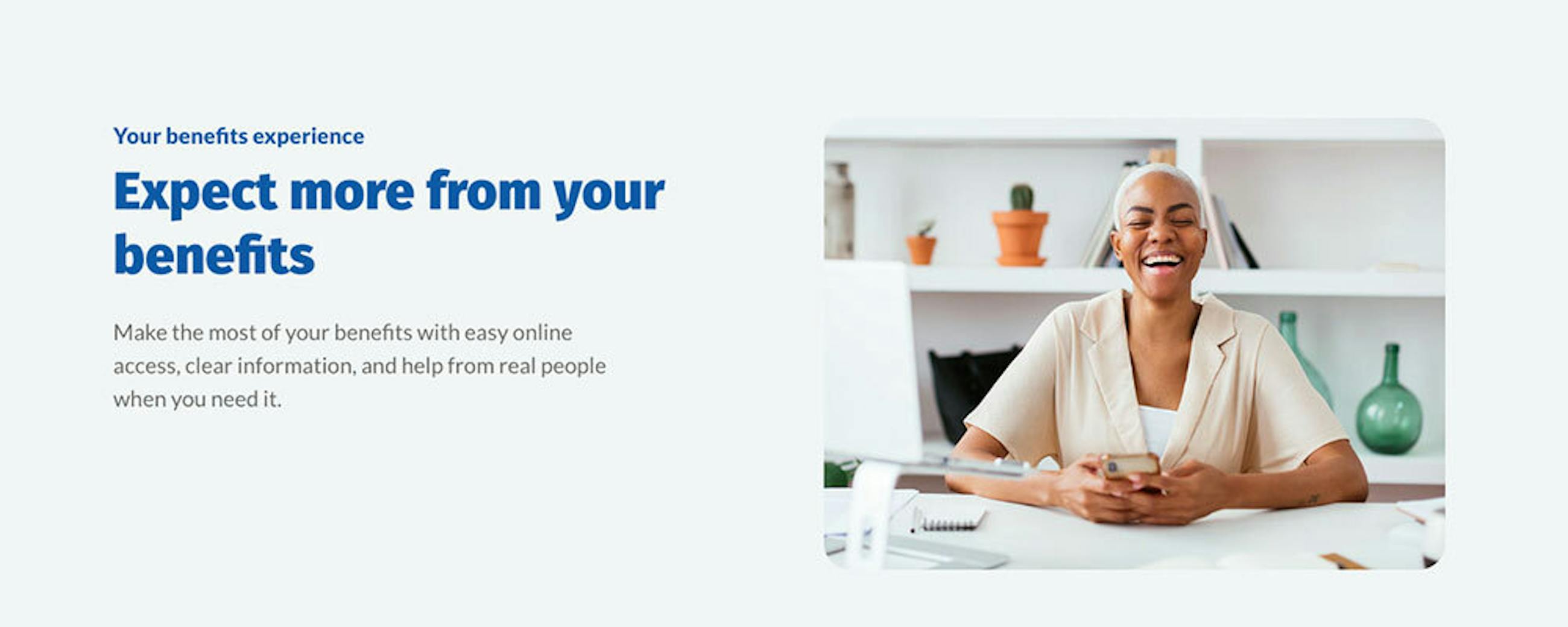A successful marketing strategy steers visitors to your website and reaches your audience through cross-channel campaigns. But once you’ve got users on your site or your email is in their inbox, keeping their attention presents its own challenge. Getting your message across quickly and clearly is necessary for driving conversions—and it’s a common struggle for business leaders and marketing teams building a website, email campaign, or other digital content.
Research shows that copy on your website or other digital content only has 8 seconds of a reader’s attention, and users only read 20–28% of the content on a webpage.
With that in mind, skilled user experience (UX) copywriters can help distill your message into its critical components, segment informative text into a digestible format, and craft an intuitive narrative that leads users through the path to engage, click, subscribe, contact, or purchase.
Here, our UX copywriters provide some tips for writing digital headlines that catch your customers’ attention quickly and help to guide them through your content.
7 Tips for writing effective headlines
For digital content, we know that shorter is almost always better. A 20+ year study of eye-tracking research shows that users skip to the most obvious, relevant information on each page. That means your page header and section headlines are critical pieces of your user journey. The following tips can help you get started.
1. Be concise.
A short headline is not necessarily a concise one. Research shows that headlines with 10-13 words attract twice as much site traffic as other lengths. Keeping copy short and to-the-point helps readers remember your message.
Try to get as much meaning as you can into as few words or characters as possible. Our rule of thumb at Breakout is this: “use as few words as possible without losing meaning.” That mantra holds especially true for writing headlines.
Our rule of thumb at Breakout is this: “use as few words as possible without losing meaning.”
The goal is to condense only critical information into a single, compelling statement. Consider these examples we wrote for the Cressey & Company website, a leader in healthcare private equity:


In these examples, the reader immediately understands how the company promises to add industry-specific value in fewer than 10 words.
The following web headline example falls into the ideal 10-13 word range, and it describes the primary value proposition for LinkUp, a leading provider of global job market data:

Both of these examples are effective because they’re concise and thematic. The headline shouldn’t include the details. It should quickly and precisely convey the primary message and let the user know what to expect as they keep reading.
2. Keep your headlines relevant.
Each headline and section header is a single opportunity to capture your audience. It might be all they read, so stay on topic and tease the information to follow.
Think about the specific goals for the web page, content section, or email you’re writing. Ask yourself a few questions to guide your message.
- Who is the target audience for this specific content?
- What do you want your user to do? Click, purchase, provide info, etc.?
- What is the main takeaway for the reader?
- Will this section present new information?
Consider this example from the website we built for investment firm P10:

This content section relies on a short, relevant headline and conveys the firm’s primary message: they provide investors with access to private markets.
The body copy (i.e., the text that follows a headline or subhead) elaborates further and persuades the user to continue their journey through the site — but the core idea stated in the headline is what most readers will remember.
3. Pack a punch.
Your headlines should hit hard. Be confident, be engaging, and get straight to the point. A few ways to engage users quickly include:
- Speaking directly to the reader using second-person pronouns like “you”
- Personifying your business using first person pronouns like “we” and “our”
- Commanding the user to take an action


Both of these headlines speak directly to their audience with bold, memorable language, engaging them in a conversational tone rather than simply describing a product or service.
4. Make your headlines actionable.
Ultimately, your goal is to convince someone to engage with your business — whether that’s generating new leads, making a sale, or gaining a subscriber. Two effective styles for actionable headlines include:
A clear call to action
Persuade your user to move forward in their journey by making a call to action. Consider this email headline from our work with Equilibria, a provider of women’s wellness products:
Urgency
A sense of urgency encourages the reader to act in the moment, and this can be done using time-sensitive language. How do you get someone to take immediate action? Give your reader a deadline.
Urgent headlines target specific engagement goals. A headline like this should lead to a purchase, a follow-up, an RSVP, completion of a form, or otherwise initiate a relationship between your business and the user.
5. Get creative. Don’t go with the flow.
Have fun with it. Be a point of curiosity or a source of humor. Every headline is a chance for your brand personality to shine through.
Incorporating wit and metaphor can help your message stand out and draw in readers — especially when it plays off surrounding design elements. Take a look at these headlines we wrote for the Forage Kombucha website, a beverage producer focused on fresh, flavorful, and healthy ingredients:


Skilled copywriters work closely with their design team to create a memorable, cohesive experience for the user. Take a look at how we paired headline writing and visual elements for Koffie Financial, a leading provider in coverage for trucking insurance:

The amount of creative leeway available to you is dependent on your audience. An investment firm speaking to potential investors might not benefit from a joke the same way a restaurant or fashion brand might use humor with consumers. Always read the room and curate your copy to speak the language of your intended audience(s).
6. Fish with a hook.
The first step to writing compelling copy is to understand what pain points your audience is facing and what solutions you can provide. When you address a specific problem, you connect with them on a personal level.
Acknowledge the concern and describe your solution immediately. Consider this headline from Elium Health, a therapy center for teens and young adults:

Problem and answer copywriting is a great way to illustrate your value. Fish with a hook, and bring in your reader with a solution. Take a look at another great example of this style of headline from past client Interior Define, an online storefront for custom furniture:
Both of these headlines insinuate a problem and offer a solution. Never let your users feel there’s a negative experience on the horizon. If you lead with a negative, you must end with a positive. You have the solution your reader is looking for, so make sure they know it. Don’t count on a user to read the fine print to get the solution to their problem. Remember that you only have a few seconds of their attention.
7. Test your headlines.
There’s no better way to see how your headlines are received than tracking their performance. Your marketing agency partner can help you dig into the analytics for your website or ad campaign to make sure your messaging is based on real data.
Knowing which headlines are tied to higher bounce rates can pinpoint areas for increased focus. Steer those examples in the direction of your best-performing content.
Your agency partner can also help you arrange A/B testing to track performance of web, email, and other digital marketing efforts. The A/B testing process positions two versions of your content to be tested against each other in real time. This way, you can make continual improvements to copywriting and design based on real data, not just a hunch.
Recruit a ringer for your copywriting needs.
Find an agency partner who puts a serious emphasis on UX research and writing. At Breakout Studio, we have a team of copywriters who help our clients audit competitors’ messaging, define a company voice, establish brand positioning, and write compelling copy for web, email campaigns, presentation decks, reports, blogs, white papers, and more.
Our full-scale agency partners with leaders in every industry to rethink and rebuild outstanding, scalable, and effective brands. We’ll help you figure out where you stand in the industry, and we’ll design, write, develop, build, and launch a brand and website that can grow alongside you into the future.









